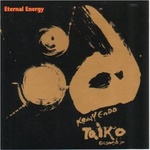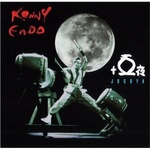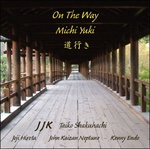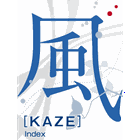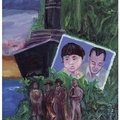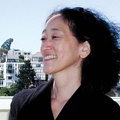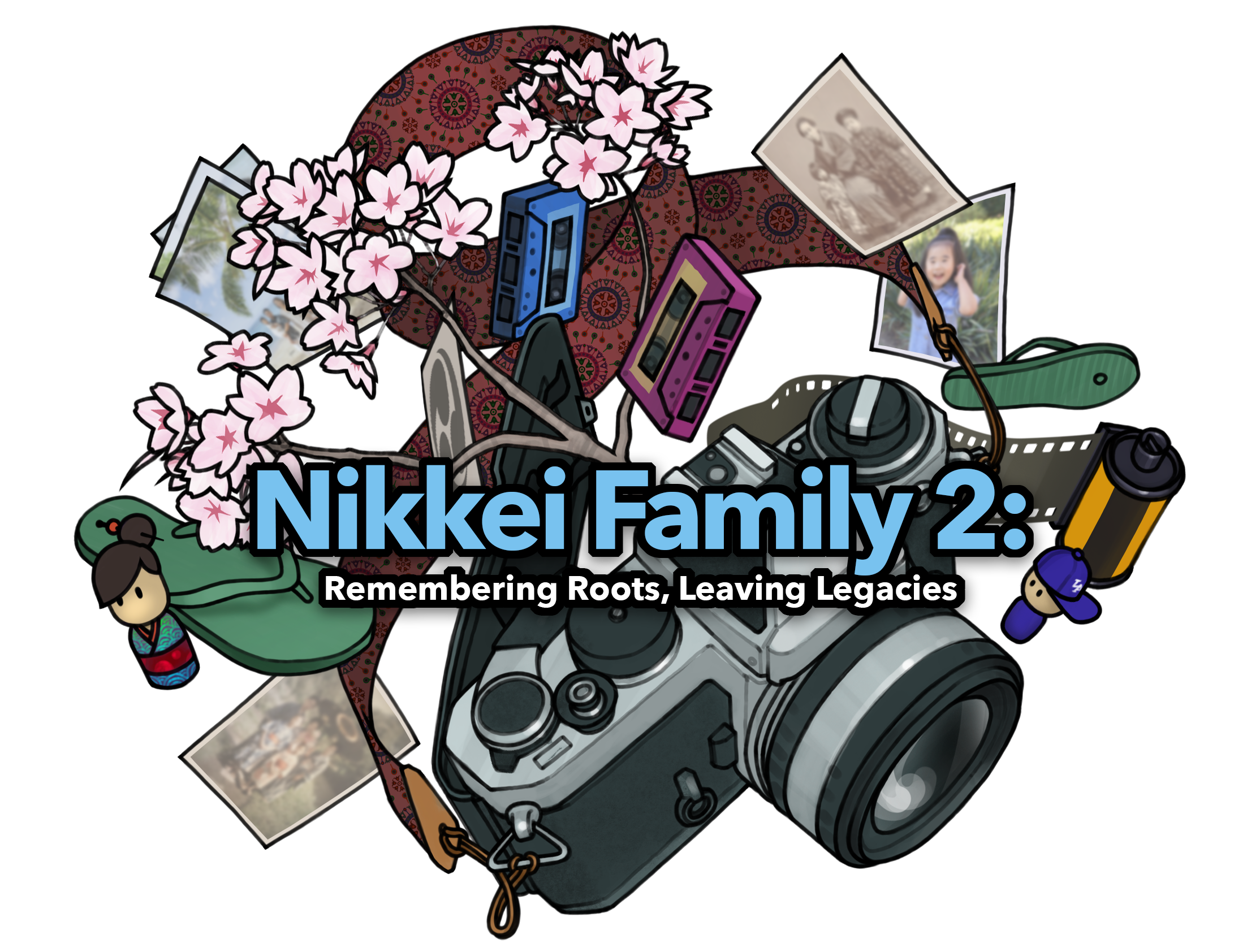>>Part 1
A wish for peace entrusted to a drumstick
After returning to Japan, he formed the Kenny Endo Taiko Ensemble and has been performing throughout the U.S., based in Hawaii, and has also performed overseas, including in Japan, the U.K., Germany, Belgium, Czech Republic, and other European countries, Brazil, Argentina, and other South American countries, as well as India and Hong Kong.
His music itself incorporates elements of music from various countries, including Africa, India, Brazil, etc. He studied ethnic music in college, so he must have had a strong interest in it from the beginning.
His debut album, Eternal Energy, released in 1994, includes songs such as "Symmetrical Landscape," which incorporates Brazilian rhythms, "Havasupai," which is inspired by Native American life, "Dream Puff," which is influenced by Hawaiian music, and "Clarity," which is inspired by African-American music. His 1998 album, Jyugoya, also includes songs influenced by Latin rhythms, and uses the conga, originally a Cuban folk instrument, along with the shime-daiko drum. The bansuri, an Indian wind instrument, is also one of the instruments he often uses in concerts. His latest album, On the Way (2007), features a collaboration with shakuhachi player John Neptune Kaizan.
There's a reason why Kenny is experimenting with blending different ethnic music styles.
"My wish is to fuse the Japanese spirit into a Western background through my performance activities. I also want to create music that fuses together the various ethnic cultures of the world, from the standpoint that peace is not merely an ideal but a reality that can be achieved."
In the late 1970s, he experienced the power and beauty of music while listening to a concert by the Indian sitarist Ravi Shakur.
"I could naively believe that if world leaders could open their hearts through the beauty of this music, there would be no more war in the world. However naive this may be, I believe that music is not just for entertainment or to kill time, but that it has an impact on people."
Songs like John Lennon's "Imagine" and "We Are the World," recorded by Michael Jackson, Stevie Wonder, and others, have extremely strong messages of peace, but even if we believe this, it is not easy to say directly that music conveys a message of peace.
This can be said with confidence because Kenny doesn't just talk about peace, he uses music as a way to put it into practice.
He trained in Japan for 10 years and even earned the Natori qualification, so there is probably no Japanese player who has inherited the Japanese technique and spirit as much as he has. But he says that his music is not purely Japanese. He considers himself a product of both America and Japan, and feels that his identity is both Japanese and American. When I met him in Asakusa, I told him that a film director named Reggie Life interviewed people who are half Japanese and half American and made a film called "Double." Kenny told me that he is friends with the film director and that he himself has a "double" sensibility.
Kenny's music, which has a dual Japanese and American sensibility and also incorporates folk music from around the world, can be said to be his own music, or conversely, it could also be called world music.
A diverse performance from the new generation
The third generation of taiko groups were born in the 21st century. One representative of this generation is Masato Baba, a student of Kenny. His parents, Russell Baba and Jean Aiko Mercer, are also taiko players who studied under Seiichi Tanaka and are the founders of "Shasta Taiko." Masato has been holding a taiko drumstick since he was six years old, making him the poster child for Japanese taiko. He formed "On Ensemble" in 2002.
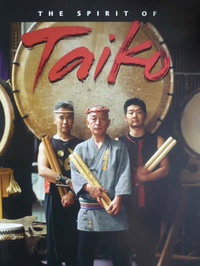
Working with him in the On Ensemble is Michelle Fujii. Michelle is a fourth-generation Japanese-American born in California in 1974. In 2003, she appeared as a guest at the Asian American Studies Association, which we host, and gave a performance of Japanese drums and dance.
There are currently over 200 wadaiko teams in North America, including all-female teams and children's teams, and the participants are not only Japanese Americans but also other Asian Americans, as well as whites and blacks. Taiko music has evolved from Japanese music to Japanese American music, Asian American music, and even American music.
There are many different ways of performing. Kinnara Taiko performs with Indian dance, Shasta Taiko performs while wearing masks and playing the drums, Loud from Vancouver performs with electric guitars, and LA Taiko Center performs with tap dance. Each group has their own unique style and is highly entertaining. Kenny is not only a member of the group, but also works as a soloist and has performed with the Honolulu Symphony Orchestra.
Some criticize this trend, saying that the original spirituality of wadaiko is being lost. However, I think that spreading it as a form of music is a good thing in itself. Wadaiko concerts are not only enjoyed by the ears, but also by the eyes. There are about 500 wadaiko groups in Japan, but the performance of a group called "TAO" based in Kyushu can only be described as beautiful. Japanese wadaiko is also developing and evolving.
If people can sense the beauty, grace, or strength of Japanese drum music, and if it brings even a moment of peace to their hearts, then perhaps Kenny's ideal of peace will come a little closer to reality.
(Titles omitted)
Kenny Endo's CD
* Eternal Energy, Asian Improv Records, Kenny Endo, 1994
* Jugoya, Bindu, Kenny Endo, 1998
* Hibiki, Bindu, Kenny Endo, 2000
* Essence, Sony, Kenny Endo, 2001
* On the way (Michi Yuki), Kenny Endo, 2007
References
* "The Creation of Tradition as Seen in Taiko" in "The History and Present of Japanese Americans" Jinbun Shoin, Yoshitaka Terada, 2002
* "Japanese Taiko Across the Sea: The World of Michelle Fujii" 18th Asian American Studies Association pamphlet, May 12, 2003
* "Selective and Strategic Ethnicity: Recreating/Reimagining Japanese Drums and the Japanese American Community in North America," Japanese American Experiences and International Migration, Jinbun Shoin, Masumi Izumi, 2007
* "The Origin and Development of Japanese Drums in America," Language and Culture, 11-2, Doshisha University, Language and Culture Society, Masumi Izumi, 2008
Reference DVD
* Taiko Project: reGENERATION, TAIKOPROJECT 2004
* Big Drum: Taiko in the United States, Japanese American National Museum, 2005
* The Sprit of Taiko, Bridge Media, 2005
* Taiko Project: Rhythmic Relations, TAIKOPROJECT 2006
* On Ensemble, OnEnsemble, 2007
Reference Websites
* Kenny Endo's website
* "Rolling Thunder": Information on Japanese drums in North America
*This article is a reprint of the 12th installment of the column series "From the Perspectives of Two Countries" in Renso Publishing 's online magazine "Kaze," which features information about new books, such as articles linking new books to current issues and daily topics, as well as monthly bestsellers and review columns of new books.
© 2010 Association Press and Tatsuya Sudo


